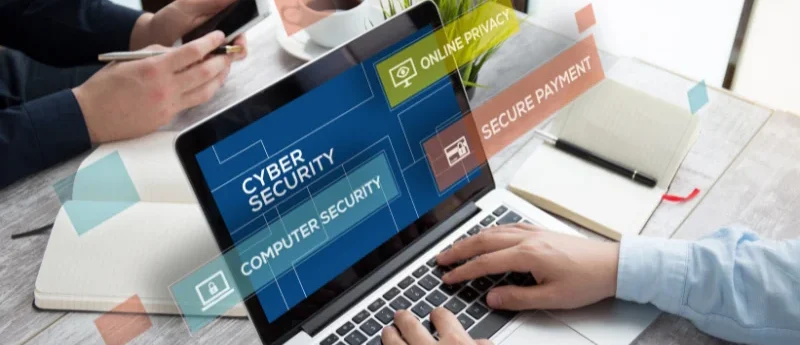In today’s digital age, the internet is an essential part of our daily lives, offering a wealth of information, entertainment, and opportunities for learning. However, as much as the internet can be a valuable resource, it also presents risks, especially for children. With the increasing use of the internet in Mumbai, it’s crucial for parents to use parental controls to ensure their kids’ online safety. These controls help protect against inappropriate content, cyberbullying, and other online threats, providing peace of mind for parents and a safer digital environment for children.
Parents must be vigilant in a bustling city like Mumbai, where internet access is ubiquitous. This blog post will guide you through the importance of parental controls and how to implement them effectively to ensure your children have a safe online experience.
Why Are Parental Controls Important?
Parental controls are software tools that allow parents to restrict and monitor their children’s internet usage. These controls are essential for several reasons:
Protecting Against Inappropriate Content: The internet is filled with content that may not be suitable for children, including explicit material, violence and disturbing imagery. Parental controls help block access to such content, ensuring that your child only sees what is appropriate for their age.
Limiting Screen Time: Excessive screen time can negatively impact a child’s physical and mental health. With parental controls, you can set time limits on how long your child can use the internet each day, helping them develop healthy online habits.
Preventing Cyberbullying: Cyberbullying is a growing concern, particularly among young people. By monitoring your child’s online interactions, you can detect and address any instances of bullying before they escalate.
Safeguarding Personal Information: Children may not always understand the importance of keeping personal information private. Parental controls can help prevent them from sharing sensitive data, such as their home address, phone number, or school details, with strangers online.
Types of Parental Controls
There are several types of parental controls that parents in Mumbai can use to protect their children online:
Device-Level Controls: These are built into the devices your children use, such as smartphones, tablets, and computers. Most operating systems, including iOS, Android, Windows, and macOS, offer built-in parental controls that allow you to set usage limits, block apps, and restrict access to certain content.
Router-Based Controls: Many modern routers come with parental control features that allow you to manage all the devices connected to your home network. This is an excellent option for parents who want to enforce consistent rules across multiple devices.
App-Based Controls: Several third-party apps offer more advanced parental controls. These apps often provide features like location tracking, social media monitoring, and detailed activity reports, giving parents greater insight into their child’s online behavior.
ISP-Level Controls: Some internet service providers (ISPs), including Jeebr Internet, offer parental control options directly through their service. These controls can block certain types of content at the network level, providing an additional layer of protection.
Setting Up Parental Controls: A Step-by-Step Guide
Here’s a simple guide to setting up parental controls on your child’s devices:
Determine the Level of Control Needed: Assess your child’s age, maturity level, and internet usage to determine which parental controls are appropriate. Younger children may require stricter controls, while older kids might need more flexibility with monitored access.
Set Up Device-Level Controls: On your child’s devices, navigate to the parental control settings. For example, on an iPhone or iPad, go to Settings > Screen Time > Content & Privacy Restrictions. On Android devices, go to Settings > Digital Wellbeing & Parental Controls.
Configure Your Router: If your router supports parental controls, log into the router’s management interface via a web browser. Look for the parental control settings, where you can block specific websites, set time limits, or pause the internet during certain hours.
Install Third-Party Apps: If you need more advanced features, consider installing a parental control app like Qustodio, Norton Family, or Net Nanny. These apps usually require you to create an account and install the app on your child’s device, after which you can monitor their activities from your own device.
Educate Your Child: While parental controls are effective, it’s equally important to talk to your child about the potential dangers of the internet. Teach them about the importance of privacy, the risks of interacting with strangers online, and what to do if they encounter something that makes them uncomfortable.
Maintaining Balance: Encouraging Responsible Internet Use
While parental controls are a vital tool for keeping your kids safe online, it’s also important to foster an environment of trust and open communication. Encourage your child to talk to you about their online experiences, and gradually give them more responsibility as they demonstrate responsible behavior.
By combining parental controls with guidance and education, you can help your child navigate the online world safely while still enjoying the benefits of the internet.
Conclusion
In a city like Mumbai, where internet usage is deeply integrated into daily life, keeping your kids safe online is a top priority. Parental controls offer a practical and effective way to protect your children from online dangers, but they should be used in conjunction with education and open dialogue. By taking these steps, you can ensure that your children have a positive and secure online experience, allowing them to explore the digital world safely and responsibly.
For more information on our services and how we can help you enhance your internet security, Give a missed call on 1800 3157 444 or visit www.jeebr.net to learn more. Like us and follow us on
Twitter: www.twitter.com/jeebrinternet
Facebook: www.facebook.com/jeebrinternet
Instagram: www.instagram.com/jeebrinternet
LinkedIn: www.linkedin.com/company/jeebr











